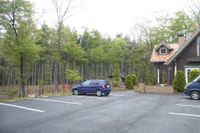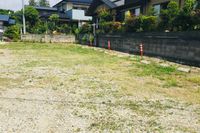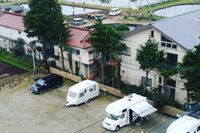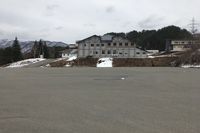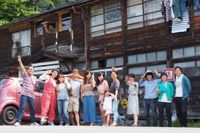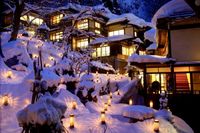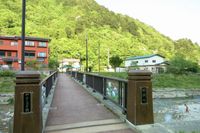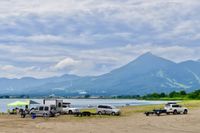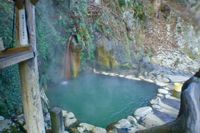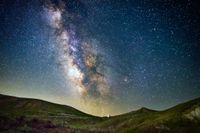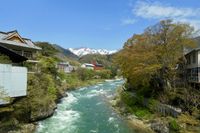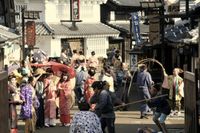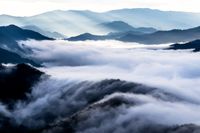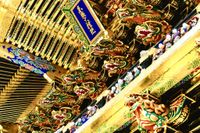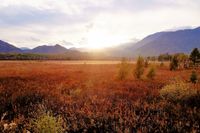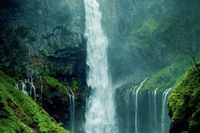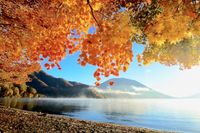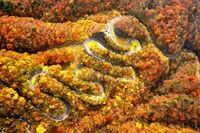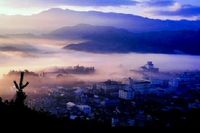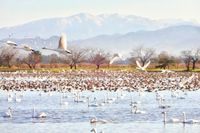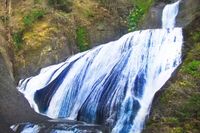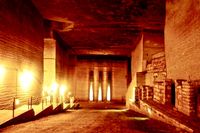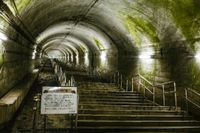Ouchi-juku
福島県/南会津郡下郷町大内

Description
This is a area in southern Aizu which is an Edo-era(1603-1868) village which is "half agricultural, half residential". There are numerous thatched roof traditional houses which give the feeling of having travelled back in time to the Edo era. There is also a specialist "Spring onion Soba" shop where one uses spring onions to eat soba instead of chopsticks.
Homepage
Address
Nearby Car Night Spots
Nearby Activities
Whoever! Whatever! Farmhouse Experience 👨🌾
¥2,000〜
/ per personNigata Oseyanagi, Kita-ku Niigata-shi,
3.0
(0)Ranking Stations
(Bonfire BBQ) Chita Mihama Noma Beach Station
¥3,500〜
/ per nightAichi Noma, Mihamacho, Chita County
4.7
(42)Vanlife BASE | 45 min. from Narita Airport / Perfect for campervan travel/A seaside town rich in nature/Japanese countryside town/welcome traveler
¥7,000〜
/ per nightChiba Koseki, Kujukuri-machi, Sambu-gun
5.0
(61)Shin Meishin Suzuka PA (inbound) RV Station Suzuka * With Power!
¥2,200〜
/ per nightMie Yamamotocho, Suzuka-shi
4.3
(156)Nearby Drive Spots
Higashiyama Onsen
This is an old bath house in Aizu-Wakamatsu city. It has 1,300 years of history, and developed as an inner parlour house of the city during the Edo area(1603-1868). The place is famous as an area where the Vice President of Shinsengumi, Hijikata Toshizo healed wounded soldiers during the war. Geisha are still active around the town today.※Credit:旅と温泉の無料写真素材 おんふぉと http://on-photo.com/
Itamuro Onsen
This is an old bath house in Nasu Shiobara City. The bath house has over 1000 years of history and was famous for being known as the "Healing water of Shimotsuke". It became known as a "Rope bath" due to the unique way of entering by holding onto a rope, but was also known as the "cane no longer needed" bath due to its reputation for being so healing on the joints that old people who needed a cane to walk no longer needed it after being healed by the bath.
Lake Inawashiro
This is Japan's fourth largest lake, situated in central Fukushima. The place is home to swans and swallowtail birds which are designated national treasures. There is a large camping area here, with Mount Bandai in the background, where visitors can enjoy various marine activities such as water boarding and water skiing.
Goshikinuma
This is a small group of lakes of which there are more than 30, in the area of Ura Bandai, north of Mount Bandai. There area has swamps of various colors such as green, red, and blue which are colored as such due to the influence of the volcanic water quality and the surrounding plants and algae. Visitors can also enjoy boat rowing in the Bishamon Swamp.
Shiobara Onsen
These are old fashioned baths in Nasu Shiobara City. The name comes from the 11 bath houses that are along the river. The area originally was called the 11 baths of Shiobara, and boasts more than 1,000 years of history as an Onsen town. The area is unique in the sense that there are several unstaffed onsen, and is popular for viewing the snow and winter landscapes while enjoying a warm onsen bath.※Credit:旅と温泉の無料写真素材 おんふぉと http://on-photo.com/
Jododaira Wetland
This is a large wetland in the Azuma mountain road. As the area is surrounded by mountains, making the air fresh, and as this blocks the light from the nearby city the area is ideal for stargazing. On a clear night, one can see around 6,000 stars with the naked eye, almost as if one is gazing directly into the universe. ※福島県 浄土平 © IKEMON750 クリエイティブコモンズライセンス(表示4.0 国際)https://creativecommons.org/licenses/by/4.0/
Kinugawa Onsen
This is an onsen on the upper stream of Kinugawa River in Nikko. At that time, the baths were exclusively used for Daimyo(Japanese feudal lord) and Monks who went on pilgrimages to Nikko. The water is famously effective against burns, and in the nearby village, there are several souvenir shops, restaurants and other shops.
EDO WONDERLAND Nikko Edomura
This is the country's largest Edo era(1603-1868) theme park, opened in 1986. Inside there are recreated Edo-style villages and Edo era experiences such as Ninja actors and Geisha actress in the style of the time. Visitors can also rent a wide range of Edo era style clothing to truly give that experience of travelling back in time.
Shiori Pass
This is a mountain pass in Minamiuonuma City, at an altitude of 1,065 meters. The area is famous for the clouds that flow and pass over and down the mountain ridge line, known as the "cloud waterfall". The mystery of this wilderness can be seen early in the morning from summer to autumn. ※滝雲(枝折峠) ©Koichi-Hayakawa クリエイティブコモンズライセンス(表示4.0 国際)https://creativecommons.org/licenses/by/4.0/
Nikko Toshogu Shrine
This is a shrine that was built in 1617 and is registered as a world heritage site. After the death of Tokugawa Ieyasu, the Tokugawa family was enshrined here. The shrine is also famous for the Yomei-mon Gate, with vivid sculpturing and colors, as well as the "3 monkeys" and "sleeping cat" statues that were built to pray for peace by the Ieyasu. Minamoto Yoritomo and Toyotomi Hideyoshi were also enshrined in this temple.
Senjyo Gahara
This is a 400 hectare high marshfield area within Nikko National Park. The name comes from the fact that two mountain Gods, Futaaranokami (from Mount Nantai) and Akaginokami (From Mount Akagi) battled a large snake and large centipede respectively. As there is nature abound, the area is also particularly suitable for hiking.
Kegon Falls
This is one of Japan's largest waterfalls in Nikko City. The 97 meter waterfall drop is quite spectacular, and visitors can view it relatively up close. The waterfall was discovered by a priest named Shodo and the name comes from buddhist scripture.
Lake Chuzenji
This is a lake formed by the eruption of Mount Nantai 20,000 years ago, inside Nikko National Park. A priest named Shodo, discovered the area, and was originally used as a training ground based on faith and worship in Buddhism. The area is particularly popular in autumn due to the autumn leaves that appear here.
Irohazaka Route
This is a hilly road (number 120) which has 48 turns - the same number of characters in the Iroha song. The first and second parts are separated by a hill, where there are two resting spots - Kurokami-daira and Akechi-daira where one can view Kegon Falls and Lake Chuzenji. The road is famous for appearing in the Japanese arcade game Initial D.
Tsukioka Onsen
This is an Onsen in the eastern part of Niigata prefecture. The water contains sulphur and is good for the skin, so is often known as an Onsen where "one can become beautiful". In the local town, there are numerous trendy cafes as well as traditional manju shops (manju is a bun with a yeast filling), Sake shops, sushi restaurants and traditional Izakaya.
Lake Hyoko
This is a wetland area in Niigata prefecture. From around October to March, around 6,000 swans migrate across this landscape, for which this area is famous. There are also around 100 other different types of birds that inhabit this area. This area was created around 400 years ago, and was so called due to its shape resembling the gourd fruit.
Fukuroda Falls
This is one of Japan's largest waterfalls in Ibaraki prefecture, boasting a height of 120m. A priest named Saigyo is said to have stated that "one cannot fully appreciate this waterfall unless you visit it in all four seasons", and it is for this reason that it is known as the "four time waterfall".
Oya History Museum
This is a huge underground area of around 20,000 meters squared which was formed by digging the area for 70 years between 1919 and 1986. During the war, it was used as an underground factory, and as a place for rice storage post war. Nowadays, it is often used as a setting for filming dramas, as well as a stage for concert performances.
Doai Station
This is an underground station in Gunma, on the JR Joetsu line. The station is 81 meters below ground, and passengers have to climb a passage of around 338 meters or 462 steps, followed by a further 143 meter passage, and finally 24 further steps, leading it to becoming known as one of Japan's "most deep underground stations".
Zao Fox Village
This is a zoo at the peak of Mount Zao in Minami-Zao. There are around 250 foxes of 6 types being raised here, with around 100 grazing in the fields. The owner opened this zoo in 1990 for the foxes (which were cultivated for fur) had no place to go. There are also rabbits, goats and ponies here too.

